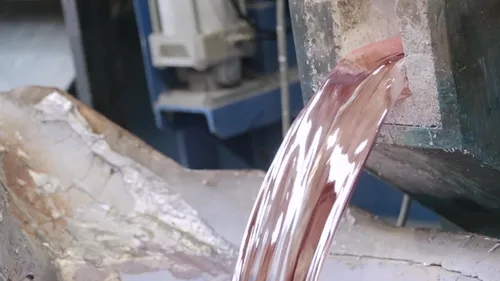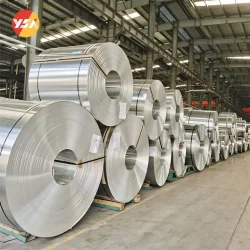When we search for aluminium foil melting temperature online, we usually get results of approximately 660 degrees Celsius or 1220 degrees Fahrenheit. However, this is not accurate.
Because aluminum is a lightweight, soft metal with excellent electrical and thermal conductivity. To enhance its properties, other elements are often added to aluminum, forming aluminum alloys. These alloying elements can include copper, zinc, magnesium, silicon, and others, and their addition can alter the mechanical properties, corrosion resistance, and heat treatment response of aluminum.
Consequently, the melting point of aluminum alloys can vary, either higher or lower than pure aluminum, depending on the type, content, and interactions of the alloying elements. Therefore, when considering the melting point of aluminum, we need to differentiate between pure aluminum and aluminum alloys in various situations.
Aluminium Foil Melting Temperature
Aluminum foil melting point of aluminum alloys are different compared to pure aluminum, which can be either higher or lower depending on the type, content, and interactions of alloying elements. The addition of alloying elements can alter the crystal structure and melting point of aluminum, thereby adjusting the mechanical properties, corrosion resistance, and other characteristics of the alloy. Therefore, it is important to consider the different aluminium foil melting temperature when handling them to ensure proper melting and processing within the appropriate temperature range.
Aluminum Foil Melting Point
|
UNIT |
ALUMINUM ALLOY |
PURE ALUMINUM |
|
Fahrenheit (f) |
865-1,240 |
1,220 |
|
Celsius (c) |
463-671 |
660 |
|
Kelvin (k) |
736-944 |
933 |

- High Thermal Conductivity
Aluminum has excellent thermal conductivity, which means it can quickly absorb and transfer heat. This property allows aluminum to reach aluminium foil melting temperature relatively fast when exposed to a heat source.
- Melting Furnaces
Melting aluminum is commonly carried out in specialized furnaces designed for high-temperature applications. These furnaces can utilize various heat sources, such as natural gas, electricity, or oil burners, to provide the necessary heat energy for melting aluminum.
- Fluxes
In certain applications, fluxes may be used during the aluminum melting process. Fluxes are substances that help remove impurities and oxides from the molten aluminum, improving its quality and reducing defects.
- Degassing
In some instances, degassing agents are used to remove gases, such as hydrogen and dissolved oxides, from the molten aluminum. This process helps improve the mechanical properties and surface finish of the final aluminum product.
- Crucibles
Aluminum is typically melted in crucibles, which are containers made from materials resistant to high temperatures, such as graphite, clay, or ceramic. Crucibles provide a suitable environment for containing the molten aluminum during the melting process.
- Alloying
Aluminum can be alloyed with other elements to enhance its properties for specific applications. Alloying elements are usually added to the molten aluminum during the melting process to ensure proper mixing and distribution throughout the alloy.
- Casting
Once the aluminum reaches its molten state, it can be cast into various shapes or forms, such as ingots, billets, or castings. Casting methods include gravity casting, die casting, sand casting, and continuous casting, depending on the desired product and manufacturing process.
While the aluminium foil melting temperature is a critical part of the overall aluminum production process, the focus of the manufacturing process for aluminum foil is primarily on rolling, annealing, and finishing to achieve the desired thickness, properties, and dimensions of the foil.
Manufacturing Process of Aluminum Foil
Aluminum Ingot Production
The process begins with the production of aluminum ingots. Aluminum is extracted from bauxite ore through a refining process and then cast into ingots, which are large blocks or bars of solid aluminum.
Alloying and Slitting
The aluminum ingots may undergo alloying, where different metals are added to achieve specific properties or characteristics. The alloyed aluminum is then typically rolled into thin sheets and slit into narrower coils.
Rolling
The aluminum coils are fed through a series of rolling mills, which gradually reduce the thickness of the metal. This process is called cold rolling and is repeated several times to achieve the desired foil thickness.
Annealing
After cold rolling, the aluminum foil may undergo an annealing process. Annealing involves heating the foil to a specific temperature and then cooling it slowly. This process helps to enhance the foil’s flexibility, strength, and formability.
Final Rolling and Finishing
The annealed foil is then subjected to further rolling to achieve the desired final thickness. This rolling process is often performed at higher temperatures and is known as hot rolling. After the final rolling, the foil may undergo additional treatments, such as lubrication or surface coating, to improve its performance during subsequent processes or applications.
Slitting and Cutting
The finished aluminum foil is slit into narrower rolls or sheets according to the desired dimensions. The foil may also be cut into specific lengths or shapes, depending on the intended application.

